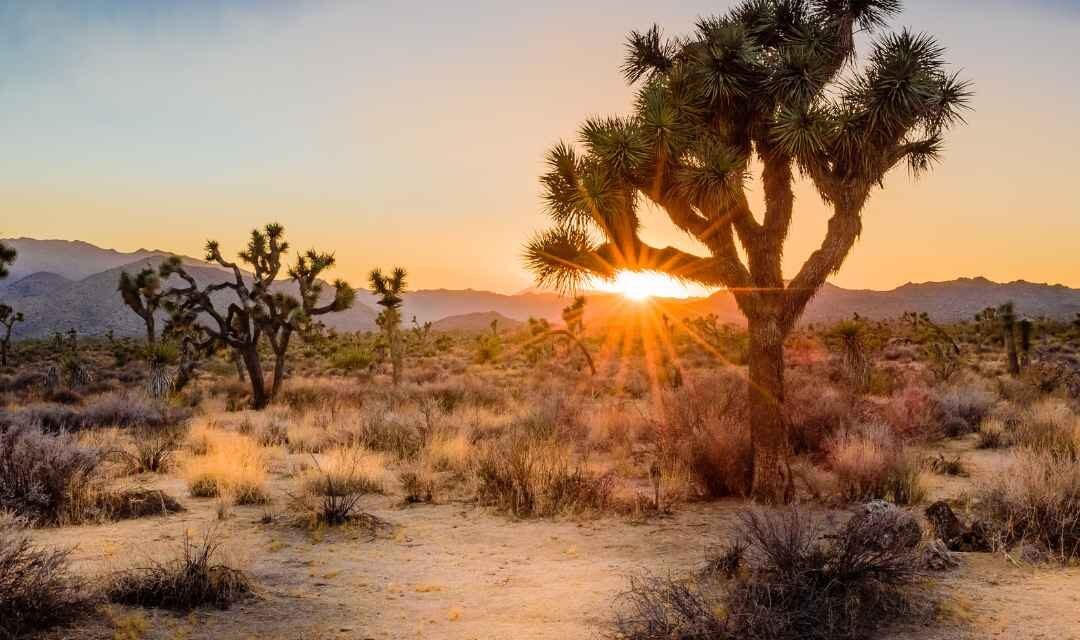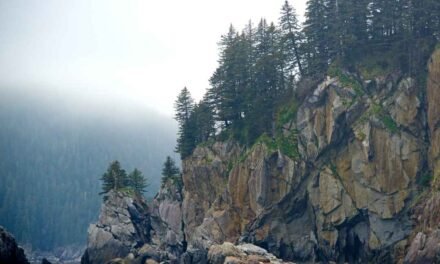Overview of Joshua Tree National Park
Joshua Tree National Park is a unique and stunning destination that encompasses two distinct desert ecosystems, the Mojave Desert and the Colorado Desert. Established in 1994, the park covers over 790,000 acres in Southern California and is famous for its namesake Joshua trees, rugged rock formations, and world-class rock climbing opportunities. The park’s diverse landscapes, rich cultural history, and abundant recreational activities make it an ideal destination for nature lovers, outdoor enthusiasts, and artists alike.
Joshua Tree National Park Location
Joshua Tree National Park is located in Southern California, approximately 140 miles east of Los Angeles, 175 miles northeast of San Diego, and 215 miles southwest of Las Vegas. The park can be accessed via three main entrances: the West Entrance near the town of Joshua Tree, the North Entrance in Twentynine Palms, and the South Entrance near Cottonwood Spring.
Joshua Tree National Park Things to Do
There is no shortage of activities to enjoy in Joshua Tree National Park. From hiking and rock climbing to stargazing and photography, the park offers something for everyone. Some popular activities include:
Hiking
Joshua Tree National Park offers over 191 miles of hiking trails, ranging from easy nature walks to challenging backcountry treks. Popular trails include the Barker Dam Nature Trail, Hidden Valley Nature Trail, Ryan Mountain Trail, and the Lost Palms Oasis Trail.
Rock Climbing and Bouldering
Joshua Tree is world-renowned for its rock climbing and bouldering opportunities, with more than 8,000 climbing routes and 2,000 boulder problems. Iconic climbing areas include Hidden Valley, Echo Rock, and Indian Cove.
Stargazing and Night Sky Programs
The park’s remote location and dark skies make it an excellent destination for stargazing and night sky photography. Joshua Tree National Park is designated as an International Dark Sky Park, and the park often hosts night sky programs and star parties at various locations.
Scenic Drives
For those who prefer to explore by car, Joshua Tree National Park offers several scenic drives that showcase the park’s unique landscapes and features. Popular drives include Park Boulevard, Pinto Basin Road, and the Geology Tour Road.
Historic Sites and Cultural Exhibits
Visitors can also learn about the park’s rich cultural history by visiting historic sites such as Keys Ranch, the Desert Queen Mine, and the Ryan Ranch. The park’s visitor centers also feature exhibits on the area’s Native American, mining, and ranching history.
Joshua Tree National Park Itineraries
With so much to see and do in Joshua Tree National Park, planning your visit can be a bit overwhelming. Here are some suggested itineraries to help you make the most of your time in the park:
One-Day Itinerary
If you only have one day to spend in Joshua Tree, focus on exploring the park’s iconic sites and attractions. Begin your day at the Joshua Tree Visitor Center to gather information and maps. Then, drive along Park Boulevard, stopping at highlights such as Skull Rock, Jumbo Rocks, and Hidden Valley. Consider taking a short hike on the Barker Dam Nature Trail or the Hidden Valley Nature Trail, and finish your day with a sunset at Keys View. If you have time and the skies are clear, stay for some stargazing before leaving the park.
Two-Day Itinerary
With two days in the park, you can delve deeper into Joshua Tree’s landscapes and activities. On your first day, follow the one-day itinerary above. On the second day, venture into the park’s southern region to explore the Colorado Desert. Drive along Pinto Basin Road, stopping at the Cholla Cactus Garden and Cottonwood Spring. Hike the Lost Palms Oasis Trail or the Mastodon Peak Trail and visit the Cottonwood Visitor Center to learn more about the park’s diverse ecosystems.
Three-Day Itinerary
A three-day visit allows you to experience even more of what Joshua Tree National Park has to offer. Follow the two-day itinerary above and dedicate your third day to exploring the park’s western side. Visit the Black Rock Canyon area for hiking opportunities such as the Panorama Loop Trail or the Eureka Peak Trail. Consider a rock climbing or bouldering session in one of the park’s popular climbing areas, or immerse yourself in the area’s cultural history by visiting Keys Ranch or the Desert Queen Mine.
Best Season to Visit Joshua Tree National Park
The best time to visit Joshua Tree National Park depends on your preferences for weather and activities. The park is open year-round, but seasonal conditions can greatly impact your experience.
Spring (March to May)
Spring is one of the best times to visit Joshua Tree, as temperatures are mild, and the park’s wildflowers are in bloom. Daytime temperatures average between 60°F and 80°F, and visitors can enjoy comfortable hiking and climbing conditions. Spring is also a popular time for birdwatching, as many migratory species pass through the park.
Summer (June to August)
Summer in Joshua Tree can be extremely hot, with daytime temperatures regularly exceeding 100°F. While the heat can be dangerous for outdoor activities, early morning and evening hikes, as well as night sky programs, are still enjoyable. Be prepared for limited shade and always carry plenty of water.
Fall (September to November)
Fall is another excellent time to visit Joshua Tree, with temperatures cooling down to a more comfortable range of 60°F to 80°F. The park’s fall foliage adds a splash of color to the landscape, and the cooler temperatures are ideal for hiking and climbing.
Winter (December to February)
Winter in Joshua Tree can be cold, with daytime temperatures averaging between 40°F and 60°F, and occasional snowfall at higher elevations. While some trails and campgrounds may be closed or difficult to access, winter offers a unique, quiet beauty to the park, and the cooler temperatures are suitable for hiking and climbing.
Joshua Tree National Park Weather
Joshua Tree National Park experiences a wide range of weather conditions due to its location at the junction of two desert ecosystems. Temperatures can fluctuate dramatically throughout the year and even throughout a single day. In general, the park experiences hot summers, mild to cool winters, and limited precipitation.
It’s essential to be prepared for changing weather conditions and always carry plenty of water, sunscreen, and appropriate clothing layers when visiting the park.
Joshua Tree National Park Hotels and Camping
There are a variety of accommodations available both inside and outside of Joshua Tree National Park. Options range from rustic campgrounds to comfortable hotels, ensuring that every visitor can find a suitable place to stay.
Campgrounds in Joshua Tree National Park
There are nine campgrounds within Joshua Tree National Park, offering a total of over 500 campsites. Some of the most popular campgrounds include Hidden Valley, Jumbo Rocks, and Indian Cove. Campsites are available on a first-come, first-served basis, with the exception of some reservable sites at Black Rock, Indian Cove, and Cottonwood campgrounds. Campgrounds can fill up quickly during peak season, so it’s a good idea to arrive early or make reservations if possible. Amenities at campgrounds vary but typically include picnic tables, fire grates, and vault toilets.
Hotels and Lodging Outside of Joshua Tree National Park
While there are no hotels within the park boundaries, there are numerous lodging options in the nearby towns of Joshua Tree, Twentynine Palms, and Yucca Valley. Accommodations range from budget motels and chain hotels to boutique inns and vacation rentals. It’s recommended to book lodging in advance, especially during peak travel seasons.
Joshua Tree National Park Restaurants
There are no restaurants within Joshua Tree National Park, but picnic areas are available at various locations throughout the park. Visitors should plan to bring their own food and water for day trips, as well as cooking supplies for camping.
For those seeking dining options outside of the park, the nearby towns of Joshua Tree, Twentynine Palms, and Yucca Valley offer a variety of restaurants, cafes, and grocery stores. Choices range from casual fast-food joints and coffee shops to sit-down restaurants featuring local and international cuisine.
Joshua Tree National Park Wildlife and Plants
Joshua Tree National Park is home to a diverse array of plant and animal species that have adapted to the harsh desert environment. The park’s two distinct desert ecosystems, the Mojave Desert and the Colorado Desert, support a variety of unique flora and fauna.
Wildlife
Over 250 species of birds can be found in Joshua Tree National Park, making it a popular destination for birdwatching. Mammals such as coyotes, bighorn sheep, black-tailed jackrabbits, and kangaroo rats are also common in the park. Reptiles, including desert tortoises and various species of snakes and lizards, can be found throughout the park, particularly in rocky habitats.
Plants
The park’s namesake, the Joshua tree (Yucca brevifolia), is the most iconic plant species in the park and is primarily found in the Mojave Desert region. Other notable plants include the teddy bear cholla, ocotillo, creosote bush, and various species of cacti, such as the barrel cactus and beavertail cactus.
Joshua Tree National Park History
The history of Joshua Tree National Park is rich and diverse, with evidence of human occupation dating back thousands of years. Native American tribes, such as the Serrano, Chemehuevi, and Cahuilla, have lived in the region for centuries, leaving behind petroglyphs, pottery shards, and other artifacts that provide insight into their culture and history.
In the late 19th and early 20th centuries, the park’s landscape was shaped by ranching, mining, and homesteading activities. Historic sites such as Keys Ranch, the Desert Queen Mine, and Ryan Ranch provide a glimpse into this era of the park’s history. The efforts of local residents and conservationists, including Minerva Hoyt, led to the establishment of Joshua Tree National Monument in 1936, which was later re-designated as Joshua Tree National Park in 1994.
Joshua Tree National Park Geology
The unique geology of Joshua Tree National Park is one of its most captivating features. The park’s distinctive rock formations were formed over millions of years through a combination of tectonic activity, erosion, and weathering processes.
The park’s characteristic granite monoliths and boulders were formed through a process called “spheroidal weathering,” where the granite’s outer layers are eroded, resulting in the rounded shapes seen today. The Wonderland of Rocks, Skull Rock, and Arch Rock are just a few examples of these striking geological features.
In addition to the granite formations, Joshua Tree National Park also contains areas of exposed Pinto Gneiss, one of the oldest rocks in North America, dating back approximately 1.7 billion years. The park’s southern region features sedimentary rocks and unique landforms such as the Hexie Mountains and the Pinto Basin, which were formed by tectonic activity and erosion.
Conclusion
Joshua Tree National Park is a remarkable destination that offers visitors a chance to experience the beauty and diversity of the California desert. With its unique landscapes, rich cultural history, and abundant recreational opportunities, the park is a must-see for nature lovers, outdoor enthusiasts, and anyone seeking a truly unforgettable experience. Whether you have just one day or an entire week to explore, this comprehensive visitor’s guide will help you make the most of your time in Joshua Tree National Park.





